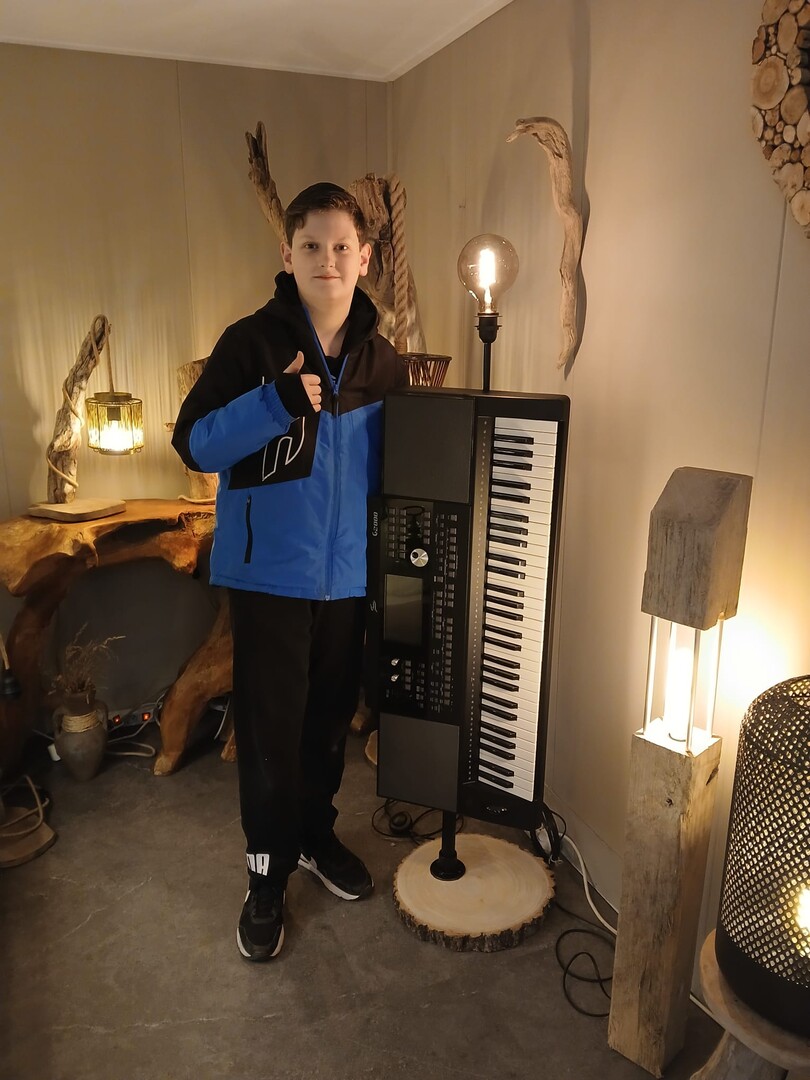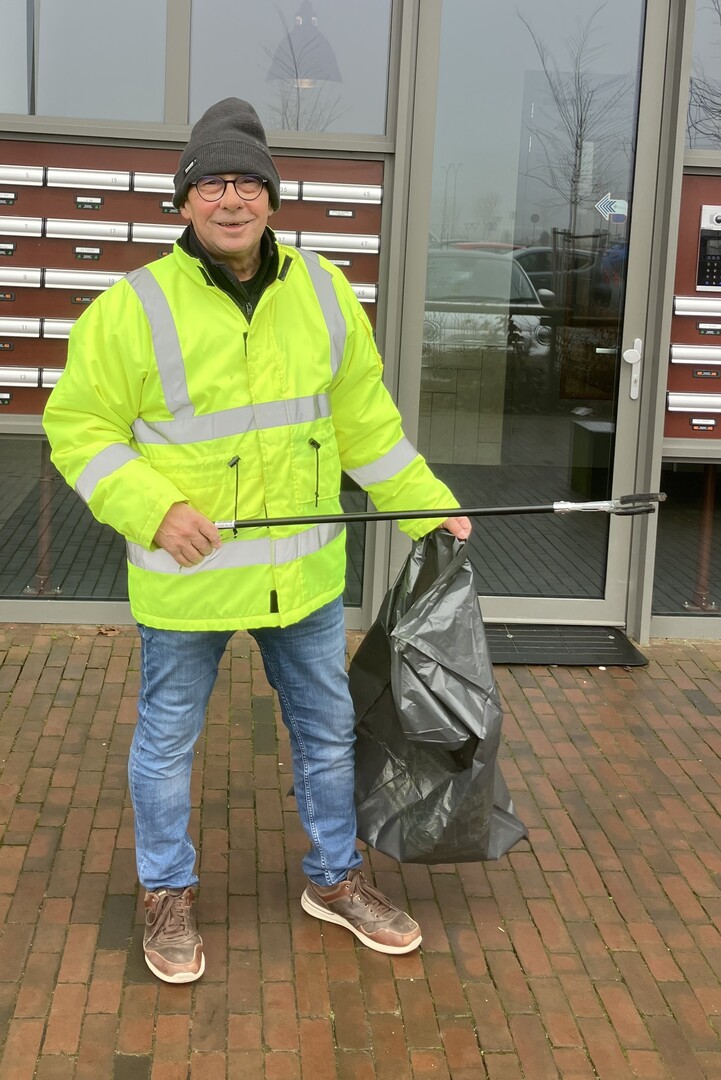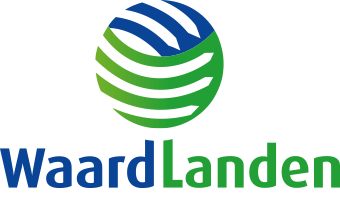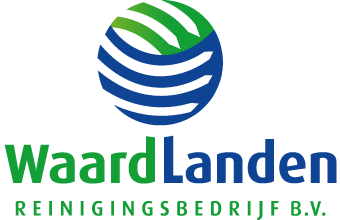
- Intro text: The holidays are over and the Christmas trees have been cleared away again. Every year, fewer and fewer trees are handed in. We were curious to know why. Therefore, in our newsletter, we asked how you decorated your homes and what happened to the trees after the holidays.
The holidays are over and the Christmas trees have been cleared away again. Every year, fewer and fewer trees are handed in. We were curious to know why. That is why we asked in our newsletter how you decorated your house and what happened to the trees after the holidays. Not very many people responded, but the answers still provide nice insights and tips. We are happy to share them.
Christmas tree or not?
The Christmas tree remains the centrepiece of the festive season for many people. Almost half had a real tree last year. Many people also have an artificial Christmas tree (38%). Only 15% did nothing to decorate.
What happened to the real Christmas trees after the holidays?
Most gave the Christmas tree to children or brought it themselves to one of our collection points. A third still had the tree at home or in the garden at the time of the flash poll.
Everyone who handed in the tree felt this went easily. Yet we asked how it could be even better. In response, half said it would be nice if there was longer time to hand in the tree. "I leave my tree until Epiphany, but by then the collection will have been over," she said. The others are fine with it as it is. "That children collect trees and can earn something from it, I think it's a super nice idea!"
And next year?
Real Christmas trees remain popular, but almost half opt for a more sustainable option this coming festive season. These tips from our readers help with that.
- Tree with root ball: put it outside again after the holidays. "This is the fourth year I've used the same tree!"
- Second-hand artificial tree: "We bought our artificial tree on Marktplaats. Cheaper and better for the environment!"
Keeping up?
Stay updated and receive tips on less waste and even better separation? Subscribe to our newsletter.

- Intro text: Together with the four municipalities, we are working to keep textiles out of residual waste. By 2024, more has already been collected than in 2023, but still almost half is thrown away. That can be done differently!
Together with the four municipalities, we want to prevent textiles from ending up in residual waste. More textiles will be collected in 2024 than in 2023, but still almost half of the discarded textiles will be thrown away instead of reused or recycled. This can be done differently.
Textile collection by municipality
Residents of the four municipalities collected a large amount of textiles together. This not only contributes to recycling, but also saves raw materials and energy. The figures per municipality:
Gorinchem: 132,000 kilos in 2024 (123,000 kilos in 2023)
Hardinxveld-Giessendam: 55,000 kilos in 2024 (51,000 kilos in 2023)
Molenlanden: 188,000 kilos in 2024 (163,000 kilos in 2023)
Vijfheerenlanden: 251,000 kilos in 2024 (235,000 kilos in 2023)
Many collected clothes are still in good condition and are given a second life through second-hand shops. Textiles that are no longer wearable are processed into new products such as cleaning rags and insulation material.
Why don't textiles belong in residual waste?
Although textile collection is increasing, almost half of discarded textiles still end up in the incinerator. Thus, valuable raw materials are lost forever.
The new legislation, Extended Producer Responsibility, states that the Netherlands must collect 50% more textiles over the next five years. This will only be possible if everyone participates. Fortunately, the Netherlands is already a leader in textile collection, but there is still room for improvement.
What is allowed in the textile container?
All textiles are welcome in the collection containers specifically for textiles, including worn or broken clothes and household textiles. Towels, tablecloths, bedding and even soft toys can simply be handed in. Many people hesitate about this, but separating textiles helps to reuse and recycle them better.
Big environmental gain
Thanks to textile collection in the four municipalities, major environmental gains have been made. Together, residents saved more than 6.7 million kilos of CO2 and over 423 million litres of water. This is equivalent to thousands of tankers full of water and a traffic jam of dozens of kilometres. This shows how much water is needed to produce new textiles and why reuse and recycling are so important.
Fighting waste together
Textiles have a big impact on the environment. If we dispose of it incorrectly, valuable raw materials are lost. This is easy to prevent: all textiles can go in the special collection container, whether broken or not. By returning textiles separately, we reduce waste and save raw materials. You can throw it in a textile container in your neighbourhood or hand it in at one of our environmental centres using the environmental pass. Do you still have good textiles? Give it a second life. Donate it, sell it or bring it to the Kringloopplein, the thrift shop or the gift shop.
Together, we make a difference!

- Intro text: Sven is 12 years old and has a special hobby: he makes lamps from old appliances. With his creative projects, he wants to show that you can make something new and beautiful out of old stuff. He also hopes to inspire people to be more environmentally aware and not just throw everything away.
Sven is a 12-year-old boy with a special hobby: he makes lamps from old appliances. Together with his father, who makes lamps from tree trunks, he often works on creative projects. With his lamps, Sven wants to show that you can make something new and beautiful out of old appliances. With his special hobby, he hopes to inspire people to throw things away less quickly and to be more environmentally aware.
How it began
His passion for making unusual lamps arose when his uncle gave him an old computer screen. 'I wanted to do something with lamps, just like my father, and this seemed like a good start. From that computer screen I made my very first lamp, I liked it so much that I never stopped. For me, it is important to reuse old stuff. I think it's a shame how much is thrown away. That's why I try to give appliances a second life. It's not only fun to do, but also better for the environment.'
From old appliance to new lamp
The process of making a lamp starts with an idea. Sven checks whether the device is big enough to make a socket in it and whether it can hold a cord. If it can, he fetches he takes out the parts he does not need at that moment. In fact, he uses those later for other projects. Then he fixes the fitting and cord, adds a switch and plug and tests if everything works. It takes an average of six hours to make a lamp.
Sven says his hobby can sometimes be quite challenging. 'Every device is different, so I often have to be creative,' Sven says. His most difficult project so far? A lamp made from an old cordless drill. 'I made a mistake when I took it apart, which made it much more complicated. But I didn't give up and eventually it worked.'
Inspiration and dreams for the future
Sven draws inspiration from others. At a market, he met a man who makes lamps from old cameras. 'Super cool! But my biggest source of inspiration remains my father.' He makes beautiful lamps from driftwood and tree trunks. So together they share their ideas and work on beautiful projects.
Reactions to his lamps are always positive. People find them original and fun. They also see how things can get a second life, which inspires them to get creative themselves. That motivates Sven to keep going. He sells his lamps on Facebook and Instagram and sometimes stands at markets. His dream? Reaching more people, being at fairs more often and maybe even advertising his lamps.
Getting started with old stuff yourself? Sven gives tips
- Use your imagination and look closely at what you have.
- Don't just throw something away; maybe you can make something new out of it.
- Have fun in what you do and try to make something beautiful out of it.
Sven hopes his story will inspire people to also do something sustainable and creative. Because together we can make the world a little better!

- Intro text: In our region, there are many avid Zappers who do everything they can to keep it clean and tidy. And great initiatives are still emerging. Earlier this year, for instance, Paul Glorie and a group of residents of the new residential complex Het Spoel in Gorinchem had a super idea: keep the neighbourhood clean together.
In our region, there are many avid zappers who do everything they can to keep it clean and tidy. And great initiatives are still emerging. Earlier this year, for instance, Paul Glorie and a group of residents of the new residential complex Het Spoel in Gorinchem had a super idea: keeping the neighbourhood clean together. They wanted to create a nice, clean environment where everyone feels comfortable. What started as a small idea soon became an enthusiastic project in which many local residents enjoy participating.
 Young and old in action together
Young and old in action together
With the slogan "A clean Spoel gives a tidy feeling", Paul and his neighbours regularly go out to clean up litter. Armed with litter picks and bags, they collect cans, packaging and other litter to keep the neighbourhood looking tidy. It also brings residents closer together. Children often enjoy helping. Older residents find it fun and a good way to stay active.
A radiant neighbourhood thanks to Paul and his litter buddies
The result is impressive. Around the Het Spoel residential complex and the streets around it, it looks radiant. The residents are proud of that. Paul's initiative shows that you can achieve a lot for your neighbourhood with a small idea. We are very grateful to Paul and his litter mates for their efforts, and hope that this initiative inspires others to join in too. Who knows, we might soon see more local residents, like Paul, making their neighbourhood a bit cleaner.

- Intro text: Wow! More than 5,100 people took part in our survey on waste between 30 December 2024 and 27 January 2025. That is a record and we are very happy about it.
Wow! More than 5,100 residents participated in our survey on waste between 30 December 2024 and 27 January 2025. That is a record, and we are very happy about it.
Valuable insights
All these answers will give us a better picture of what is going well and what could be improved. That way, we can work together on smart solutions to reduce waste and separate it even better.
How to proceed now?
Independent research firm Avalon is now reviewing all responses. We will share the results with you around the summer.
Thank you again for your time and opinion. Together we will ensure a waste-free and clean region.

- Intro text: Residents could hand in their Christmas trees between 27 December and 11 January at collection sites, the environmental street or the Kringloopplein in Nieuw-Lekkerland. Each real Christmas tree earned a 50-cent reward.
Between 27 December and 11 January, a total of 6918 Christmas trees were collected in the municipalities of Gorinchem, Hardinxveld-Giessendam, Molenlanden and Vijfheerenlanden. Of these, as many as 5522 trees (79.8%) were handed in at the collection locations on 3 and 4 January. The remaining 1396 trees (20.2%) were taken to the environmental centres.
A nice pocket money and a clean neighbourhood
Every real Christmas tree - without wooden cross, pot, nails and decoration - earned a 50-cent reward. For many children, this was the chance to go out into the neighbourhood and collect trees with friends during the Christmas holidays. Behind the bike, on foot or with the help of parents or carers, the trees were handed in at the various collection locations. This way, they not only earned a nice pocket money, but also helped to keep the neighbourhood clean and tidy.
What happens to the Christmas trees?
The trees handed in were shredded immediately and processed into valuable raw materials such as compost, green gas and ground cover. Some of the bedding went to a nearby farm. There, it serves as a lovely warm and fragrant bed for the cows in the free-range barn. When cow manure is added, it composts. This compost can later be spread on the land again. Thus, discarded Christmas trees are not waste, but a valuable raw material.
Together we make a difference
With 6918 Christmas trees collected, we ensure a tidy start to the year. The Christmas tree collection is a great example of cooperation between residents, contractors and Waardlanden. We thank everyone who handed in a Christmas tree. Together we prevent waste and make a difference.

- Intro text: We regularly put someone in the limelight who works for a cleaner neighbourhood. This time it is litter picker Dick Roodhorst from Ameide. Dick talks enthusiastically about what drives him and why he enjoys helping.
We regularly put someone in the limelight who works for a cleaner neighbourhood. This time it is Dick Roodhorst from Ameide. He has been picking up litter since he retired in 2021. This way, he enjoys being outdoors and being useful at the same time. Dick talks enthusiastically about what drives him and why he enjoys helping.

- Intro text: Celebrate Sinterklaas sustainably with our toy swap markets! In the run-up to Sinterklaas, we organise toy swap markets in the region together with local partners. Bring your unused toys and swap them for something new!
In the run-up to St Nicholas, together with local partners, we organise toy exchange markets in the region. On Thursday 14 November, there is a toy swap market in community centre Rozenobel in Gorinchem, organised in cooperation with the LimonadeBrigade. A day later, on Friday 15 November, there will be a second toy swap market at AanZet library in Hardinxveld-Giessendam. These swap markets offer a great opportunity to give new life to unused toys and to celebrate Saint Nicholas in an environmentally friendly and inexpensive way.
Toy exchanges
Do you have any good, clean and complete toys lying around at home that are not being played with? Then visit the swap market on 14 November in Wijkcentrum Rozenobel in Gorinchem or on 15 November in Library AanZet, in Hardinxveld-Giessendam and give your toys a new life. For each toy handed in, you will receive vouchers. With these you can pick out other toys during the swap market. Residents who only want to donate without bartering are also welcome.
Celebrating Saint Nicholas affordably and sustainably
Our environment coach Nelleke Gouw, explains: 'With these toy swap markets, we not only make the Sinterklaas festivities inexpensive, but also more sustainable. In many households, many toys remain unused while still in good condition. By swapping these toys, other children can be made happy and fewer new items need to be bought. This reduces waste and packaging, as well as the use of new raw materials, time and purchasing stress.
A celebration of sharing
Toys left over after the swap markets go to the Toy Bank. Then other children can enjoy them too and St Nicholas is more fun, sustainable and for everyone. Please note that books and soft toys will not be accepted or exchanged.

- Intro text: With a whopping 23.8 kg of textiles per pupil, pupils from Eben-Haëzer School in Leerbroek stood out above the rest. 461 pupils from five primary schools participated and collected textiles fanatically between 30 September and 11 October. The result? No less than 4,769 kilos of textiles to be reused or recycled.
With an impressive average of 23.8 kg of textiles per pupil, the Eben-Haëzer School from Leerbroek is the big winner of the second edition of the Textile Competition in Vijfheerenlanden. From 30 September to 11 October, 461 pupils from five primary schools enthusiastically set to work collecting as many textiles as possible. The result? A whopping 4,769 kilos of textiles reused or recycled.
Reward for commitment
Again & Co rewards each participating school with €0.20 per kilo of textile collected. For the winning school, this amount is even doubled. The school can use this for fun activities or donate it to a sustainable cause in the region. On 17 October, the Eben-Haëzer School received a cheque of no less than € 942.40, delicious cakes and a circular gift, presented by alderman Joop van Montfoort, education officer Ozan Cimen and Johan van de Zande of Opnieuw & Co.
Together against textile waste
Every year, we throw an average of 7 kg of textiles per person in the residual waste, which eventually ends up in the incinerator. It is harmful to the environment, with extra CO2 emissions and pollution of our earth. Councillor Joop van Montfoort said: 'The Textile Competition is a great way to fight waste and make a real difference. Children are the consumers of the future. They learn in a fun way about the impact of the garment industry on the environment and the importance of recycling. And how they themselves can contribute to a better environment by making more sustainable choices. With the Textile Competition, we ensure that valuable material does not go to waste. It gets a second life and saves raw materials. That's how we contribute to a more sustainable world.'
Give textiles a second chance
Do you have any textiles at home that you no longer use? Don't throw it in the residual waste. There are so many better options. Give reusable clothes, bags, sheets and cuddly toys to someone who can use them or sell them (online). You can hand in your textiles during opening hours at Opnieuw & Co Leerdam. Or bring it to the Kringloopplein in Nieuw-Lekkerland, a thrift or gift shop. And don't forget the special clothing fairs and swap markets. Or bring old textiles to the recycling centre or put them in the collection container for textiles in the neighbourhood. Even worn or broken fabrics can go in there.
Participating schools
Participating in the Textile Competition Vijfheerenlanden were: CBS De Ontdekking in Hei- en Boeicop, Fundament in Nieuwland, Eben-Haëzerschool in Leerboek, CBS Juliana in Leerdam and CBS De Rank from Meerkerk.
About the Textile Competition
The Textile Competition was organised for the second time by Opnieuw & Co, Municipality of Vijfheerenlanden and Waardlanden. The aim of the Textile Competition is to reduce residual waste, increase recycling and give new life to raw materials. In addition, children learn about sustainability and recycling in a fun way.

- Intro text: Do you ever wonder in which waste bin a product or material belongs? Our waste separation guide helps! You can now download it in as many as eight different languages. You can print it out and put it in a handy place at home. Then you will always know in which container to put your raw materials.
Do you ever wonder in which waste bin a product or material belongs? Our waste separation guide helps! You can now download it in as many as eight different languages. You can print it out and put it in a handy place at home. Then you will always know in which container to put your raw materials.
With the campaign Nice and tidy we help residents further reduce waste and separate it even better. This way, less residual waste remains to be incinerated at high cost and as many raw materials as possible can be recycled. Proper separation of waste and raw materials is important to give a second life to as many materials as possible. This way, waste becomes raw material again. All help and tips we have collected for you on the campaign page.
Make waste separation easier
Not sure where something belongs? Then use the handy separation guide in the Waardlanden app. This way you always have all information about waste and raw materials to hand. Prefer a paper waste separation guide in another language? You can view the waste separation guide in as many as eight languages, download it and print it out if necessary. Then you can hang it up in a handy place at home and quickly see what belongs where.
- Download the handy waste separation guide in Dutch
- Download the handy waste sorting guide in Arabic
- Download the handy waste sorting guide in English
- Download the handy waste sorting guide in Ukrainian
- Download the handy waste sorting guide in Polish
- Download the handy waste sorting guide in Romanian
- Download the handy waste sorting guide in Spanish
- Download the handy waste sorting guide in Turkish

Waardlanden handles the collection of household waste and raw materials for the municipalities of Gorinchem, Hardinxveld-Giessendam, Molenlanden and Vijfheerenlanden.

At Waardlanden, we ensure that your business waste is collected smartly and processed responsibly. From waste collection to smoothing and sweeping business premises - we offer tailor-made solutions to suit your business.
Curious about the possibilities? Call us at 0183 73 22 50 or schedule an appointment with our business advisor. Together, we will look at the best solution for your business!








